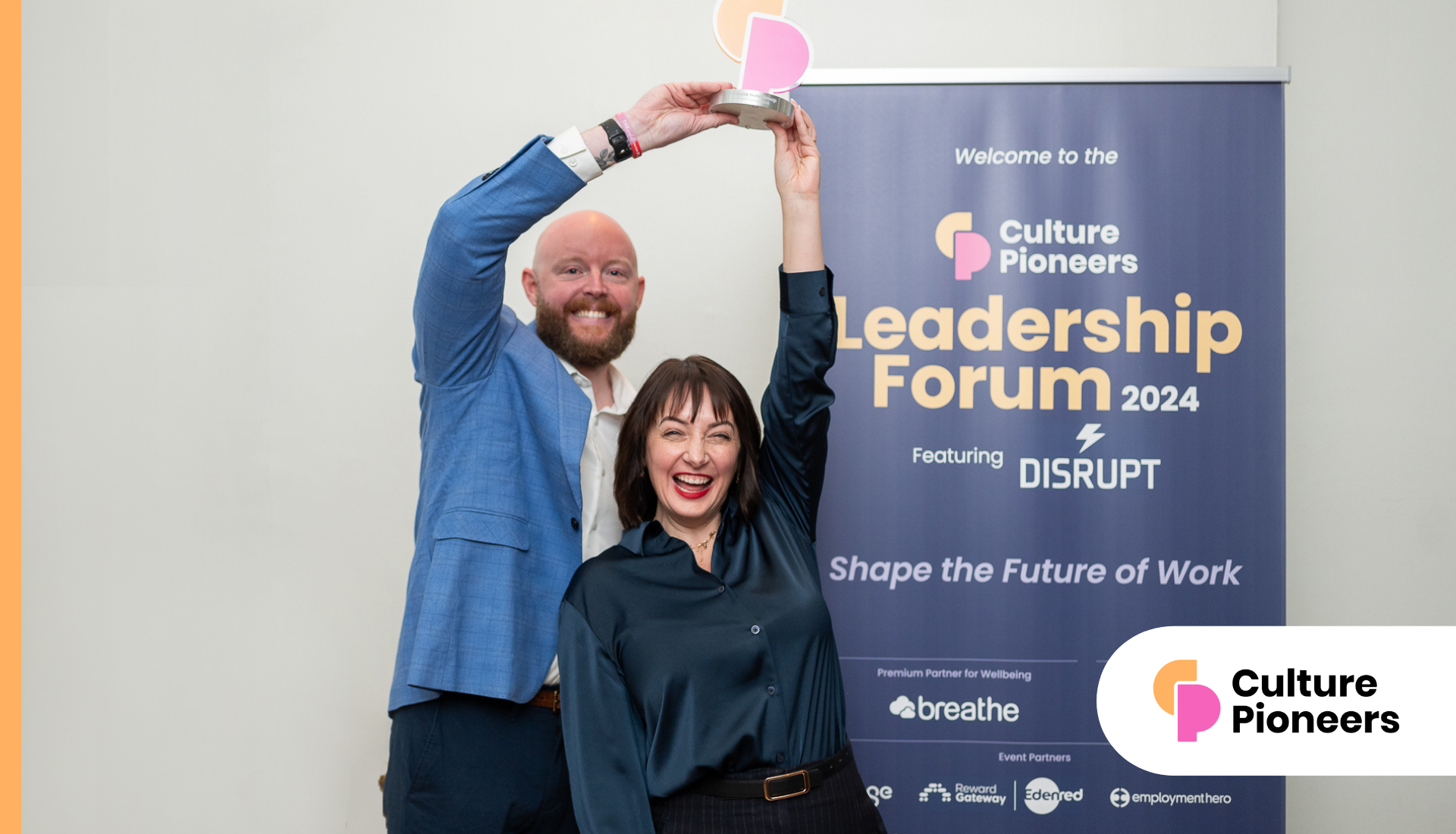Workplace culture is often a house of cards: it stacks up, one play at a time, as we hire and fire, change policies, and respond to market fluctuations. Without an intentional focus, culture can easily collapse—and bring down business prospects with it. So, there are two ways to play your hand: will your culture be haphazard and risk becoming toxic? Or will it be purposeful and supportive of workers? Ultimately, people really are everything to an enterprise.
If you’re looking to grow your business and retain the best talent, you want a culture that engages your employees.
When poor morale struck my company after the economic downturn of 2008, I knew we couldn’t continue to compete with a weakened workforce. Minus a solution, I turned to researching the top companies that appeared to be weathering the storm just fine. I learned that their common denominator was great culture. With certain elements embedded in their business models, their people had the support they needed to excel under difficult conditions.
I called these elements pillars of culture. I identified seven of the most important ones, which leading organisations like Google, 3M, and General Motors all included in their management plans. Today, these pillars serve as ideal ways to gauge any company’s culture. Take a look to see how your business culture stacks up.
Pillar 1. Transparency: the free flow of information and communication
Warning signs:
- It takes five tries to get information or answers from the ‘right’ staff person.
- Any given employee is not aware how their actions affect the company’s bottom line.
- CEO and upper management have no contact with ground-floor workers.
Best practice:
- Every member of the company can recite what every other member of the company does in their job, and why.
- Employees have access to company profit-and-loss statements and are trained in how to read them and how the numbers apply to their own performance.
- An open-door policy allows anyone in the company to approach anyone else whom they believe might provide advice or needed details.
Takeaway: a culture of openness gives workers the tools and people resources they need to do their jobs well and efficiently.
Pillar 2. Positivity: the working ethos that guides action and decision-making
Warning signs:
- Managers and project teams are continually putting out fires when plans go awry.
- Meetings focus on what needs fixing instead of making improvements.
- Coworkers form cliques that denigrate outsiders.
Best practice:
- Key players make primary and contingency plans before trouble can arise.
- Morale is maintained by discussing what is going right, for context in problem solving and long-term planning.
- Teams bond via shared goals and social outlets, so that no one feels left out.
Takeaway: a culture of positivity encourages healthy coworker interaction and keeps businesses moving forward despite challenges.
Pillar 3. Measurement: the way in which performance is assessed
Warning signs:
- Employee reviews are conducted only after a mishap.
- Productivity is gauged only in terms of profits.
- Data is collected but does not affect policy decisions.
Best practice:
- Managers check in with employees for two-way feedback weekly, quarterly, and annually.
- Key performance indicators are identified by reviewing notable achievements and failures for unifying events, which are then measured periodically.
- Data is interpreted and used proactively to select, change, or jettison policies, plans, or people.
Takeaway: a culture of ongoing measurement results in fair employee treatment, an understanding of the company’s current strengths and weaknesses, and continual innovation.
Pillar 4. Acknowledgement: how superior work is recognised and rewarded
Warning signs:
- Certain individuals become known as the ‘boss’s pets’.
- Excellent work is not acknowledged, to avoid requests for raises or promotions.
- Every high achiever gets the same token Costa or Starbucks gift card.
Best practice:
- Managers identify success benchmarks for each role and acknowledge employees who reach them.
- Speeches, awards, or gifts to high achievers are presented in front of colleagues as well as in closed-door meetings.
- Symbols of recognition take many forms, including coworker testimonials, cash, and gifts of a personal nature.
Takeaway: a culture of public and private acknowledgment for achievement shows workers what success looks like and motivates them to excel.
Pillar 5. Uniqueness: distinct aspects of staff and business purpose that set companies apart
Warning signs:
- Coworkers do not know each other personally.
- The company’s products or services are promoted by what they share with leaders in the market sector.
- Clientele is assessed only in demographic terms.
Best practice:
- Employee personality test profiles are shared, and meetings and casual get-togethers include Q&A sessions on people’s hobbies, passions, and current events.
- The company’s products or services are promoted via their unique selling points, to distinguish them from competitors’.
- Clients are surveyed and interviewed for their specific reasons for being attracted to what the company has to offer.
Takeaway: a culture that celebrates uniqueness can optimize employee interpersonal relations, stand out from the competition, and act on the preferences of its customers.
Pillar 6. Listening: how meetings and disparate viewpoints are handled
Warning signs:
- Meetings become speaking competitions, with everyone jockeying to take the floor.
- Difficult conversations regarding performance or customer satisfaction are one-way monologues that don’t invite dissent.
- Objectives fall short because people aren’t heeding advice or following through on workflow.
Best practice:
- Meetings are tightly scripted, with attendees, background prep, and agenda fully spelled out and adhered to.
- Difficult conversations start with listening to the subject’s version of events and addressing any potential biases or misinterpretations that might have influenced the situation.
- Leaders model good listening habits that include: resisting multitasking; repeating back what speakers have said or asking clarifying questions; and pledging to act on what they hear.
Takeaway: a culture that insists on thoughtful listening will be better able to make informed decisions and to best satisfy employees’ and customers’ needs.
Pillar 7. Mistakes: company protocol for errors, misjudgment, and blunders
Warning signs:
- Employees who are not competent at a role are punished for unacceptable work.
- Employees are never held individually accountable for little errors caused by shoddy work.
- Employees are punished equally for everyday errors as well as big mistakes.
Best practice:
- It’s up to managers and HR to ensure that employees are either suited to all of their job tasks, provided training, or reassigned.
- Repeated errors caused by laziness, inattention, or fatigue are addressed by probation, termination, or rescheduling.
- Big mistakes are seen as occasionally inevitable; they are treated as learning and innovation opportunities and incorporated into planning and team meetings.
Takeaway: a culture that values mistakes as part of the experimental process shows respect for its workers and a commitment to continual improvement.
[cm_form form_id=’cm_65a14c3f5da64′]
What kind of company culture do you want?
If you’re looking to grow your business and retain the best talent, you want a culture that engages your employees. Each of these seven pillars provides a way to support and motivate your staff, engaging them with their work, rather than just relying on a paycheck to do those things. Studies show that money is not enough to encourage best efforts.
When we satisfy our employees’ needs, they’ll be able to do the same for the clients they serve. So, the benefits of great culture extend beyond your office walls.
As I discovered after applying my research, taking an intentional approach to forming the culture we really want can keep an endangered business from collapsing. Our subsequent growth and decrease in employee turnover reveal that working on culture can, indeed, turn a house of cards into a stable, thriving organisation.
Interested in this topic? Read The seven pillars of building a successful company culture.








